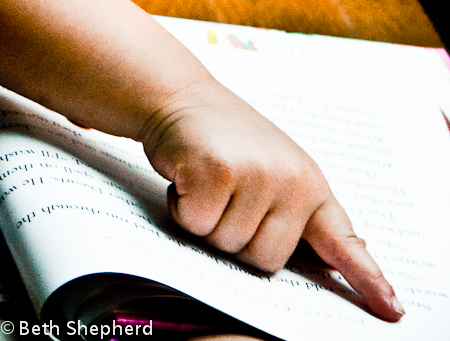 Every child and every adoption has its own unique story—a life story. The telling and retelling of this story is an important building block in helping an adopted child understand his history and build a bridge from his beginnings and “first family” to the present and his adopted family.
Every child and every adoption has its own unique story—a life story. The telling and retelling of this story is an important building block in helping an adopted child understand his history and build a bridge from his beginnings and “first family” to the present and his adopted family.
There are many ways to record and share a child’s life story. Some families create a family blog, others write essays or even a memoir, and many families create a “lifebook” with pictures or clippings of key moments and memories. Unfortunately, unlike the endless options of “baby books” for those who give birth, there are still very few baby books that meet the needs of adoptive parents, particularly those who adopt internationally or who adopt older children.
A lot of adoptive parents I know use digital online resources like Shutterfly, snapfish.com, kodakgallery.com to design personalized photobooks that tell their child’s life story in pictures and words. Many families also create scrapbooks or shadowboxes to store memorabilia like plane tickets, birth certificates or a leaf from the tree outside the orphanage. If you’re more tech-savvy and less crafty, there are digital resources for scrapbooking too. Programs like My Memories , Memory Mixer
or Digital Scrapbook Artist
can help create backgrounds, layouts and gussy up a page.
Some families create both a book to share more publicly and book to be viewed privately only by immediate family, if the details include sensitive parts of a child’s history. And, I’ve even seen a third–“kid-proof”– version made especially for a young child’s little hands (like a 3-ring binder with protective slip sheets for photocopied pages).
Some of the elements I’ve seen included in scrapbooks/lifebooks are:
- Time before the baby/child: Pictures of the family and home before the child arrives. I’ve seen people talk about their hopes and fears, describe their own journey of infertility and share the support and reactions of family and friends.
- Referral/first meeting: A referral picture or a letter from the adoption agency, original health reports, travel itinerary, foster family fare. Some people might describe their feelings as they prepare to take a (sometimes very long) journey to meet their child. Others might take pictures of airports, hotels…and, of course, the first emotional moments of meeting a child. For those who adopt domestically or through foster care, they might describe meeting the birth mother/family or foster parents. Including pictures and details, whenever possible, is a wonderful way to give a child a connection to those early days in their life—what they looked like, what the surroundings of their foster home, town, orphanage was like.
- The story of birth itself: For families who are able to attend a child’s birth or know details about the birth story, including photos or memories of this moment is important for a child. And, for those who meet a child at an older age (even months old), mention of that fact that their adopted child was “born” to a real person is a crucial piece of information. Some adopted children, who do not hear about how they were born might imagine their origins are different from other children (I heard one story where a child told his friends he was “born on an airplane” because that’s where his story started…coming home on a plane).
- Becoming a family: Photos and details of the adoption process such as fingerprints, court visits, obtaining birth certificates or passports, the time spent waiting, the people who helped along the way (adoption agency, nannies, foster family or caregivers, even translators and taxi drivers)—all of these are pieces of the story that will be meaningful as a child grows and help give context to the different phases of their life.
- Cultural history: Photos of the town where you met, the food, the people, the scenery, the hospital they were born, the foster home or the orphanage where they lived. Any links to this significant part of who they are, is valuable.
- Homecoming: Feelings about becoming a family, the people who met you at the airport, baby showers, first days together in your home, new discoveries about each other, favorite activities, first words or steps, an empty crib that now holds a baby.
- The road ahead: Why stop at homecoming? Lives and life stories are always evolving. As children grow, encourage them to add their own milestones, memorabilia and memories.
Life stories—however they are captured and told–are one way to share how a family became a family. And, they serve as stepping stone by offering a tangible starting point from which children can ask and find some answers to important questions: Who am I? Where did I come from?
Early on, children may not understand what it all means, but most children love to hear their story. And, as they grow these stories help open the door to more conversations about adoption and identity. To me, therein lies the beauty: a child’s story unfolding over a lifetime, revisited over and over and seen, heard and understood with fresh insights as the years pass.
Family stories are meant to be shared, and you’ve captured many ways to do in your post, Beth. I kept a journal while waiting to adopt our daughter, and when she was in preschool we wrote a basic story together which she shared with her classmates. Since then I’ve written a longer version for her eyes only whenever she wants to read it.